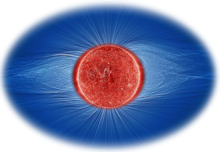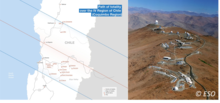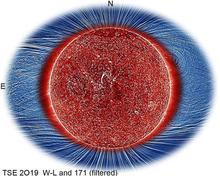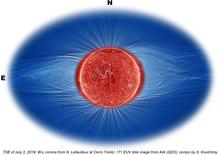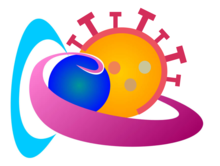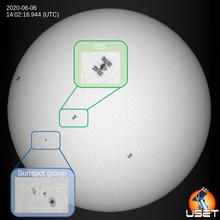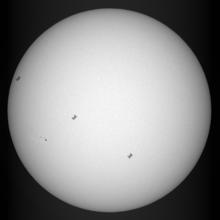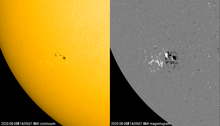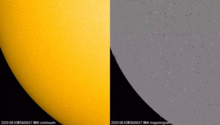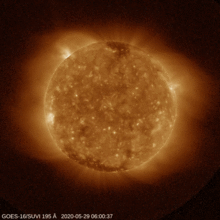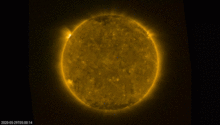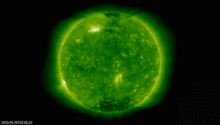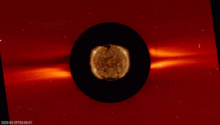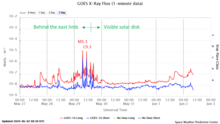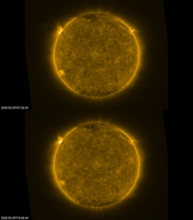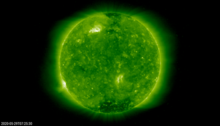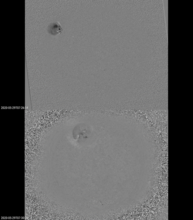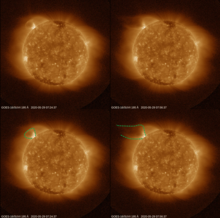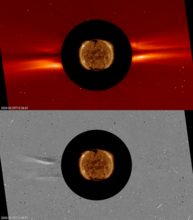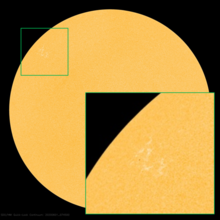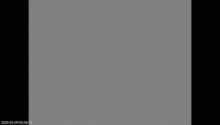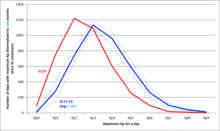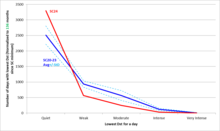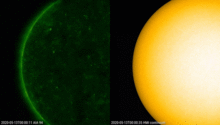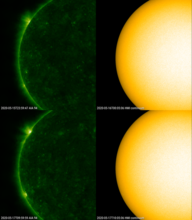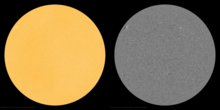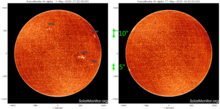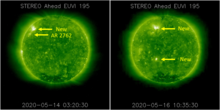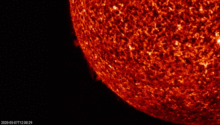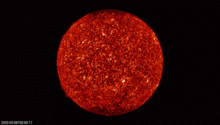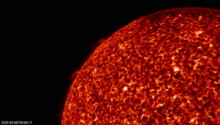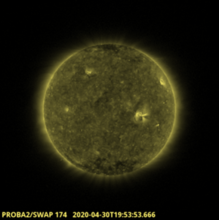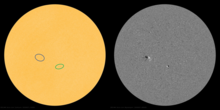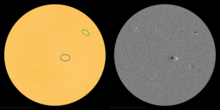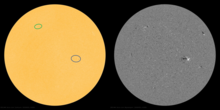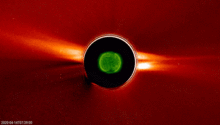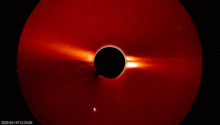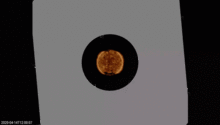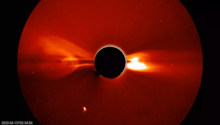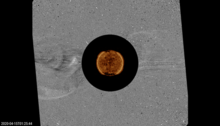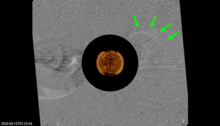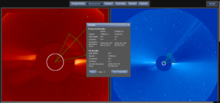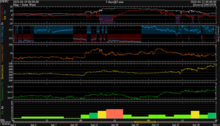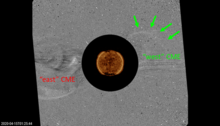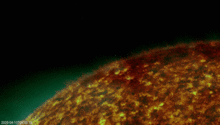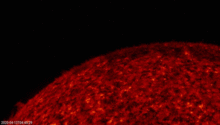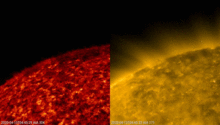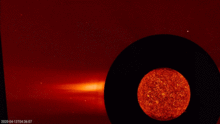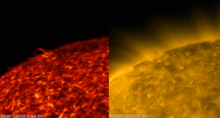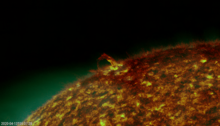news
Submitted on 2020-07-07
A composite of EUV and white light imagery taken during the eclipse of 2 July 2019 shows the solar corona in all its glory!
Submitted on 2020-06-15
It is June, the time of the year of the annual STCE meeting. But COVID-19 forces us to rethink the concept.
Submitted on 2020-06-10
Solar observers at ROB caught the International Space Station (ISS) transiting the Sun.
Submitted on 2020-06-02
On 29 May, the Sun surprized the space weather community with some unexpectedly strong solar flares from an active region that was still behind the solar limb.
Submitted on 2020-05-26
The latest data confirm that solar cycle 24 is a huge disappointment in terms of geomagnetic activity.
Submitted on 2020-05-19
Bright faculae fields appeared near the east solar limb late on 16 May. They belong to the new solar cycle but alas, so far, they have remained spotless.
Submitted on 2020-05-11
Dynamic prominences were visible at the solar limb from 8 till 10 May.
Submitted on 2020-05-05
The last days of April, the Sun was adorned by four small sunspot groups. Three of them belonged to the new solar cycle 25.
Submitted on 2020-04-28
On 20 April, a minor geomagnetic storm ensued following the impact of a slow but potent interplanetary CME. Due to the lack of an obvious on-disk source, the weak nature of the CME, and data gaps in coronagraphic imagery, both the impact and its strength came as a surprize to space weather forcasters.
Submitted on 2020-04-21
A compact eruption near the northern polar coronal hole took place on 13 April. It was associated with a fast and narrow coronal mass ejection.
Pages
Zircon - This is a contributing Drupal Theme
Design by
WeebPal.

